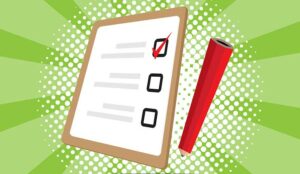Today, customers are telling companies exactly what they think about products, business processes and competitors in the calls taking place every day in the contact centre. Customer surveys, especially those performed following a specific encounter with a company, are an important gauge in measuring customer satisfaction and reaction to company processes. But these surveys usually provide only directional information, because gaps in the survey methodology make it difficult to provide detailed information required to evaluate how customers truly feel and act.
As a result, these gaps often lead to measuring for the sake of measuring, or worse, incorrect conclusions. Some of the most common problems with survey methodology include:
- High costs for relatively little data gathered
- Timing delays that limit data integrity and reporting
- Filtering bias through the way questions are worded and captured
- Context missing from the survey results
Recently, speech analytics technology has been deployed to help fill these gaps and provide a more robust system to measure, report and improve on customer satisfaction. By supplementing the survey process with speech analytics – the real “voice of the customer” – companies finally have relevant business intelligence they can act on to improve the customers’ experience.
The High Cost of Surveys
Reaching a critical mass to collect a relevant sample of surveys requires a great deal of time and money. A leading company that performs customer surveys for their clients charges $42 per completed survey. With low response rates, it can take one to two hours of outbound calls to collect one completed survey. And while companies have different plans and frequency for data collection, this example suggests a cost of more than $20,000 for just 500 completed surveys, and a period of a few days or weeks to collect the information. With a low response rate and a lengthy collection timeframe, this is a remarkably high cost to pay for what is merely a sampling of customer opinion.
Timing Delays: Data Collection and Reporting
The process through which post-encounter surveys are conducted often introduces timing delays that can limit data integrity and value. For example, suppose a customer interacts with a customer service agent on the 9th for one reason, calls back on the 10th for another reason, and then receives a survey on the 11th, regarding the experience on the 9th. Does the customer know the survey is for his actions on the 9th? How can his experience on the 10th not influence his rating for the 9th? Customers cannot readily distinguish between their different interactions, so their survey responses become an amalgam
of recent experiences. The resulting information is directional, but lacks adequate detail upon which to take action.
To further exacerbate timing delays, survey results are often compiled and reported 45 to 60 days after a call takes place. If a survey from an experience on the 1st is collected on the 3rd, but then isn’t reported until a monthly review that occurs on the 12th business day of the following month, this feedback is then 45 days old. Thus, the contact centre has lost the opportunity to make a more immediate change that could have a significant impact on cost savings and customer satisfaction. The information that surveys provide as well as the supporting context should reach the hands of decision makers as soon as possible after the survey has been rendered.
Filtering Bias
Filtering comes in many disguises. Filtering can come by the way the question is worded to “lead the witness”. Filtering also can result from the way data is collected. For example, one Nexidia client requested speech analytics of their outbound calls concerning customer loyalty. We discovered that customers provided multiple responses in their feedback, but only one specific reply was captured in the actual survey from the outsource provider. In fact, 36% of the customers’ feedback was not incorporated into the reporting they received.
Filtering also happens through reporting, where data is often over-condensed so that it fits on a PowerPoint slide. A monthly scorecard may show a customer loyalty score increasing one month, and increasing even higher the next month, but there is no information regarding the cause of the change. Therefore, the information is nearly useless.
Loss of Context
Context is an important ingredient needed to understand a customer’s survey response. A common problem with pure satisfaction measurements is that a customer may often claim to be “satisfied,” but this does not necessarily mean “loyal” . A customer may have thought the agent was professional and said “no” gracefully, but that doesn’t resolve their frustration with the company’s processes, policies and products. Understanding the context in which the customer provides this feedback is critical to making improvements that provide value to both customers and the enterprise.
Speech Analytics: An Alternative to Surveys
Speech analytics offers a unique ability to close the gaps in customer survey programs, providing a cost-effective
method to help measure the “voice of the customer” at a much broader level, with timely reports that help companies truly understand customers’ feelings and reactions at the point of contact. Instead of surveys that collect a sampling of customers’ opinions, days after an interaction, speech analytics can be used to ensure that every customer interaction is evaluated and that this information can be acted upon almost immediately.
Put briefly, speech analytics is the process of analysing the actual conversation between a customer and a contact centre agent and identifying the topics and issues that come up during the call. Because this information is gathered during the call itself, and can be collected simultaneously from the thousands of interactions that occur daily between a company and its customers, speech analytics provides a powerful supplement to survey methodology for understanding and improving customer satisfaction.
Increasing the Value of Information with Critical Context
As previously noted, a survey completed days after an interaction often does not include the context that helps explain a customer’s responses. With speech analytics, however, the customer’s response and reaction is measured during the actual call itself so that the original context of the interaction is maintained. And instead of relying on a small sample of customer interactions, speech analytics can gather this data on every contact, and categorise a multitude of responses based on customer input, so the results can be examined at both the macro and micro levels.
Removing the Consequences of Filtering
Out of necessity, surveys are structured in a way that allows data to be gathered for later analysis. But this structure often dictates how customers will respond, and can be a filter that biases the results. In contrast, speech analytics pulls information from the actual conversation between the agent and the customer and as such contains none of this potential for bias. From the previous example where a survey may only allow one response to be recorded per customer, speech analytics can identify multiple responses and track and report on the frequency of each type of response, which provides a more granular understanding of the issues driving customer ratings.
Tearing Down the Timing Barriers
One of the greatest benefits of speech analytics is that the data is gathered constantly and results can be made available almost instantly. Now, instead of waiting for a bi-weekly or monthly report on customer satisfaction, managers can obtain this information daily, or at any interval that is relevant to their business. And with the ability to easily trend results over time, call centre managers, product managers, process engineers, and executives can uncover and act on issues that are having an impact on customer satisfaction and measure the results of their actions to ensure they are successful. Speech analytics enables this constant feedback loop with a certainty and timeliness that has never been available through traditional surveys.
Conclusion
While surveys have long provided a means to gauge the general satisfaction of a customer base, this methodology seldom provides more than a qualitative approach to identifying the issues impacting customer satisfaction and the company actions needed to improve it. By addressing the gaps in the survey methodology, speech analytics provides a much more cost-effective way to quantify the “voice of the customer” and create a timely feedback loop that allows decision makers to act on this intelligence to truly drive greater customer satisfaction and loyalty.
Contributors
Author: Jonty Pearce
Published On: 14th Mar 2010 - Last modified: 27th Oct 2020
Read more about - Technology, Customer Surveys, Nexidia, Speech Analytics















